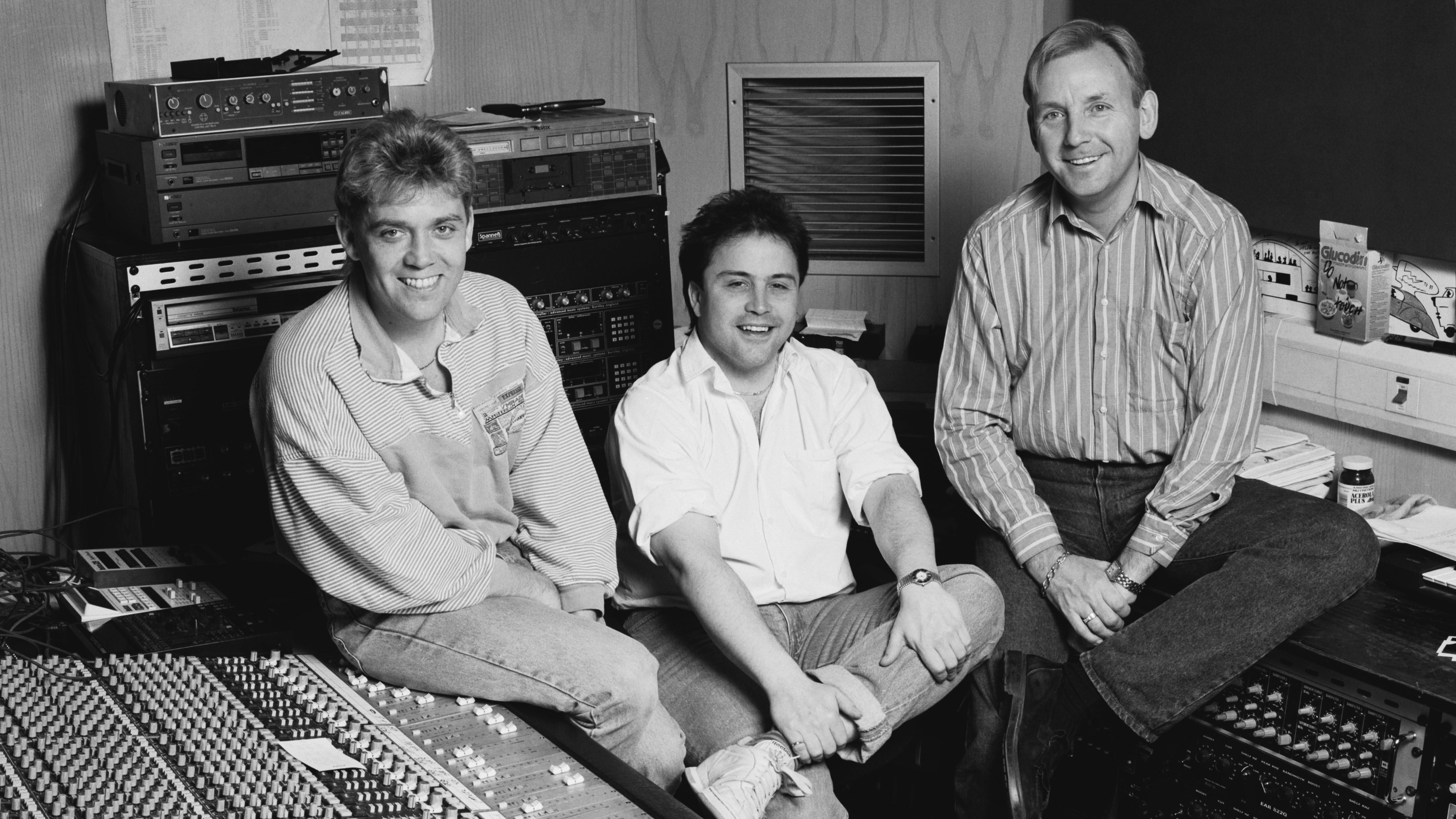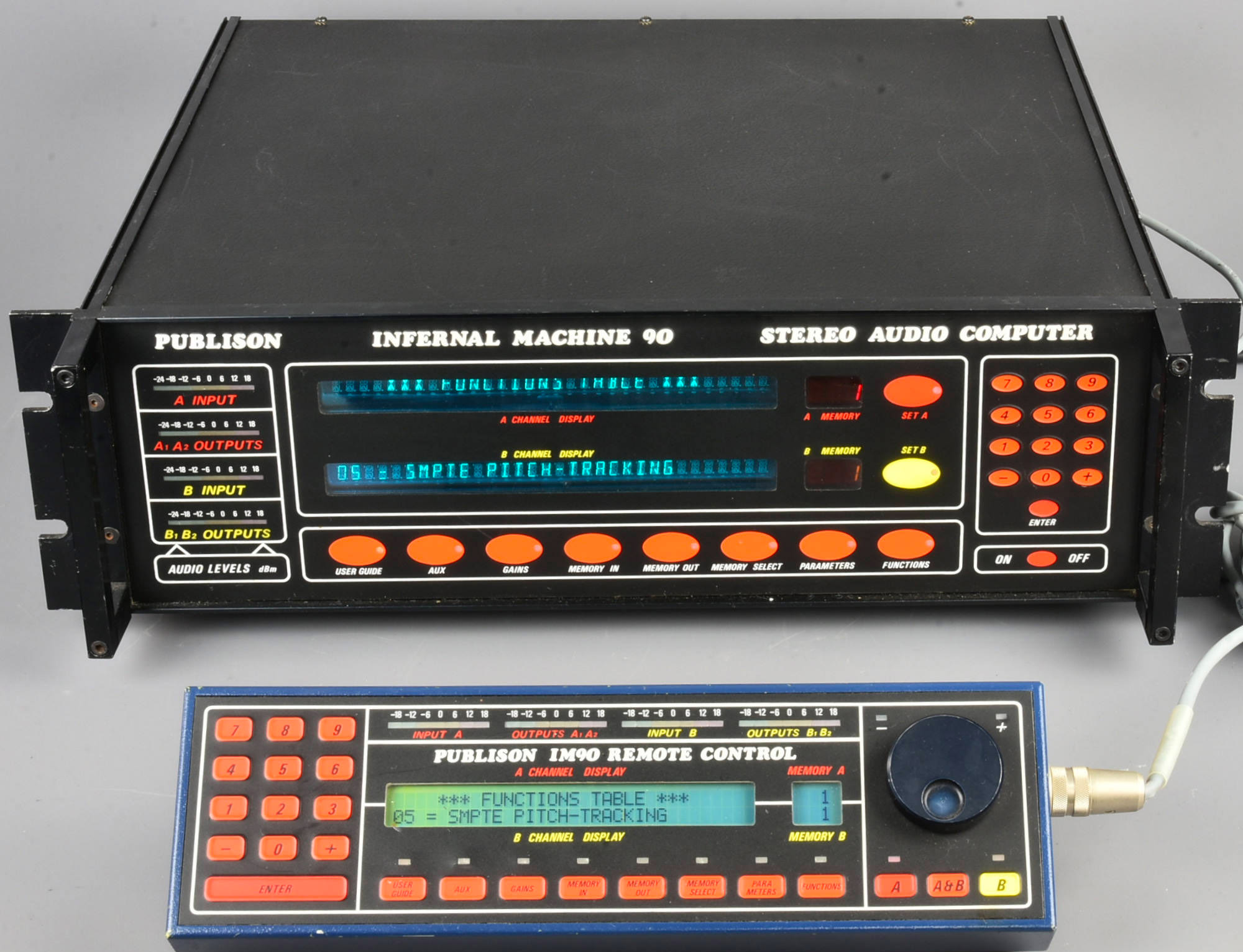Secret SAWs: the story of the impossible sampler that made the Stock Aitken Waterman smashes, and the backroom boys that pushed it to its limits
Keyboards came and went throughout SAW’s hundreds of hits, but one box kept delivering the tricks. Think you know sampling? Think again

Back in the early '80s samplers and sampling were very much the hot story in the studio. But before music went sample crazy the emergent digital tech of the time was put to more sober studio duties – creating solid-state versions of the unreliable, unrealistic analogue echo and reverb units of the day.
While super-expensive leviathans such as the Fairlight and Synclavier get all the credit in the '80s the real magic was happening elsewhere...
While instruments such as 1980’s Fairlight and its cheaper and more '80’s-omnipresent rival the Emulator hit the big time by focusing purely on the recording and playback of sound, enabling the construction of ever more ear-catching hit singles in the process, the world of digital effects underwent a revolution, creating ever more realistic reverbs and flawlessly controllable delays in boxes that, while sending studio boffins into raptures, never made the stage of Top of the Pops…
So while super-expensive leviathans such as the Fairlight and Synclavier get all the credit in the '80s the real magic was happening elsewhere and producers such as Stock Aitken Waterman found themselves in an arms race with the likes of Trevor Horn to see who could use the latest boxes best.
Using the same digital tech as the crude samplers of the day, digital effects took sound to the next level. Sounds onboard could be played back straight for echo or ‘cloned’ countless times and played back as multiple reflections for flawless controllable reverb.
The algorithms onboard the likes of 1978’s Lexicon 224, 1981’s Sony DRE-200 and 1983’s Yamaha Rev1 became the go-to sound for reverb and countless plug-ins today have presets modelled upon them. Meanwhile 1978’s AMS DMX 15-80 became the world’s first microprocessor-controlled digital delay.
While technically a delay unit, shorter times could produce reverb and as a side-effect of the digital tech on board the upgraded 15-80S model added something previously unheard before – pitch shifting. Listen to Joy Division’s Unknown Pleasures, Brian Eno and Daniel Lanois' production for U2 to hear it in action, in particular the opening drone on Where The Streets Have No Name.
But perhaps the most interesting addition to the 15-80S was something AMS called ‘loop triggering’ which introduced the world to digital sampling a full year before the Fairlight.
Want all the hottest music and gear news, reviews, deals, features and more, direct to your inbox? Sign up here.
Using its ‘Lock In’ feature, rather than echoing away to nothing, sound could be captured in the box forever. You could truncate its start and end points with A and B controls and then trigger its playback via a sound fed into its Input A.
With enough memory for four hundred milliseconds of left and right stereo sampling out of the box, the feature lent itself perfectly to replacing short sounds such as drums. Capture a perfect drum sound from a favourite record or sound library and have that triggered by the inferior snare sound your band had supplied. Simple.
It turned [Kylie's] voice into something that little bit ‘electronic’ rather than just straight tracking. That was part of the secret
SAW Mixmaster Phil Harding
Much has been written about Stock Aitken Waterman’s speed of output and voracious appetite for turning the talentless into triumphs, but less so about the tech that made it happen. And the AMS 15-80S is a key component in their success.
Working fast, writing and recording with the artist, Mike Stock and Matt Aitken would leave the finer details of their productions to their backroom staff. Increasingly their ‘Mixmasters’ – as they became known – became an essential part of the magic and the AMS the box that made it possible.
While Stock and Aitken would work exclusively with a Linn Drum and later a Linn 9000 Mixmasters such as Phil Harding and Pete Hammond would use the AMS to improve and replace the sounds quickly deposited in their paymaster’s lightning-fast studio sessions. The AMS’s ‘Lock In’ could swap plain beats for favourites from an ever-expanding library. Soon, multiple units were in place both in The Borough (main recording studio) and The Bunker (mix room) of SAW’s studio allowing multiple overdubs to be performed at once.
Speaking to Future Music magazine SAW Mixmaster Phil Harding recounts the drum replacement process. “When we mixed [Mel and Kim’s] Showing Out we had lots of Chicago house 12”s around and I’d snatch as many things as I could from these records and lock them into the AMS. The clap and the snare. Then I’d retrigger it from what the guys had programmed. There are quite a few samples on there.”
And the AMS wasn’t exclusively used for its sampling skills. “The AMS was part of the standard set-up when we were mixing. We’d have Kylie [Minogue] at least double-tracked, if not more, and then we got into a routine of setting the AMS with no delay but the output a tiny bit sharp. And that would just add that slightly ‘mechanical’ sound. It turned her voice into something that little bit ‘electronic’ rather than just straight tracking. That was part of the secret.”

But while the AMS sounds superb – and at 15-bits way better than the 8-bit Fairlight it shared the studio with – its pitch-shifting was never exactly ‘realistic’. AMS shifts have a distinctive ‘shimmer’ that became its trademark, and soon the unit had its rivals.
Publison were a French company who were on a mission to do better. Focusing on improving the nature of the pitch shift effect to produce a shimmer free, more ‘real’ effect, their DHM 89 B2 also from 1978 had the AMS beat, but it was 1983’s Infernal Machine 90 that took pitch shifting to the next level and earned a place in SAW’s studio.
While the Infernal Machine could ‘do’ the AMS’s delay and reverb effects with aplomb it was its sampling and pitch-shifting skills that caught the team’s eye. It was 20-bit and so sounded way better than the Fairlight of the day. And out of the box, its 28-second memory was enough for some serious stereo sampling. Its pitch shifting (plus or minus two octaves) was flawless (leading to press speculation that Kylie Minogue was just a sped up Rick Astley). And it had another major ace up its sleeve – it had MIDI…
With the Publison SAW’s engineers could program and sequence their samples for the first time rather than simply triggering them from tape as with the AMS. Plus – bonus – the MIDI note value that was input could be mapped to the amount of pitch shifting the unit produced… Now producers could ‘play’ the sound captured on a keyboard… At any pitch… And – crucially – do so without changing its length.

It’s debatable how mind-blowing Publison themselves found this feature but in the fledgling studio of Stock Aitken Waterman the arrival of the Publison was a game changer. Sampling and playback on the Publison was like magic. Conventional sampling tech is actually pretty simple. Once through an analogue to digital converter and captured to memory, samplers simply slow down or speed up the playback speed of what’s on board in order to produce different pitches which are spanned over the keyboard.
Thus, when a sample is dropped one octave it simply plays back at half the speed and therefore doubles in length. Over the years – beaten to a pulp by hundreds of s-s-s-samples – our brains are conditioned to the sound. High notes make vocals chipmunk-y while on lower notes everything gets deep and slooooooow…
But on the Publison, samples remained at the same length, producing sounds that, to ears fine-tuned to spot sampling, simply sound impossible. Keen to exploit the trick, while the sample-based Fairlight, Fairlight IIX, Fairlight III each got a good workout in SAWs studio over the years, it’s actually the Publison that puts in an appearance on every track, creating countless ear-catching moments.
Mixmaster Phil Harding explains. “The Publison was the first sampler that allowed you to play the samples on a keyboard while they stayed the same length. We loved that. That became our standard. It ended up being an integral part of the 12”s and even on the 7”s we were making.
The standard stock-in trade for the time was that the boys would just leave the middle eight blank… They’d just say, “Just sample something and put it in there. We can’t be bothered with a middle eight.” They’d leave it for the engineers to fill! It became a running joke. What’s Phil going to do with this middle eight?”
They’d just say, “Just sample something and put it in there. We can’t be bothered with a middle eight.”
Phil Harding
Writing on his blog Assistant Engineer Les Sharma – a frequent right-hand man on Harding’s lengthy and creative mix sessions – goes further, “As the boys played table tennis I would do little jobs for Phil. One would be to sample off the chorus vocals in the Publison sampler. The Publison was MIDI, not like the AMS and played a very important part of working, recording and mixing at PWL.
“The chorus would be spanned across a MIDI keyboard and Phil would then use this to make ‘Vocal Locs’. A ‘Vocal Loc’ is a vocal cut-up and pitched effect which is what you hear on the intro of [Kylie Minogue’s] Hand on Your Heart 12” after the acapella intro and the drums come in. Most PWL 12″ records have ‘Vocal Locs’ and the Mel and Kim records are famous for them. ‘Show, show, sh, sh showing out’. Things like that.
“Armed with the Publison and a MIDI keyboard, Phil would mute the vocals on tape and start playing around with vocal locs, playing live over the tape on the outro chorus. When he had a good vocal loc in his head he would then program it via the Linn 9000 over eight bars. Phil might come up with three or four different locs, record all of them on the analogue multi-track and choose different ones as he went along mixing the 12”.”
It’s one such Publison-based Vocal Loc experiment that led to one of Stock Aitken Waterman’s most defining moments and – after Dead or Alive’s You Spin Me Round (Like A Record) – their second UK number one.
“Sometimes during mixing if Mike or Matt walked past The Bunker as Phil was doing his 12″ vocal locs they would have a quick go and come up with a couple of ideas,” says Les Sharma.
Pete Waterman takes up the story of Mel and Kim’s Respectable in his autobiography I Wish It Was Me. “Mike Stock thought we needed a gimmick for the song so he decided to put the “Tay, tay, tay, tay…” sample at the beginning of the song. It was something hardly anyone had done before and technically quite hard to do.
"He loved it but Mel and Kim and their manager hated it. It was the only time I’ve ever seen Mike really dig his heels in about making a record. He said that if they took it off he was never going to work with them again.”
“Mel and Kim took the track – complete with the samples – away with them to a PA they were doing in Holland and later that night we got a phone call from their manager. He said ‘Whatever you do, don’t take that bit off the beginning because I’ve got an audience here going absolutely wild for it!’ We left it on and Respectable became Mel and Kim’s first number one.”
And soon the team began to find even more uses for their magic box. The Publison was used to ‘fly in’ huge swathes of music and choruses to wherever the track needed them. Famous for working with some of pop’s lesser talented talent the trio could now nail one chorus and use it throughout the song.
Likewise, backing vocals – why waste time performing, recording and mixing it all again when you could ship in all your BVs wholesale and perfect every time? And if they were really in a hurry – and they often were – entire drum and percussion loops could be retasked from song to song and artist to artist. All in flawless digital stereo for the first time.
Phil Harding explains, “It wasn’t polyphonic, but it was stereo with about 30 seconds of sample time, so if Mike Stock had done a whole chorus of harmonies we’d take that down to a stereo track, sample it into the Publison and trigger it off the SRC timecode so it was exactly in time for the next chorus. And it was 20-bit, so it sounded great.”
Want to hear SAW’s secret box in action?
Try that intro to Mel and Kim’s Respectable. It opens with an otherwise impossible in-time-with-the-music repeat of the girls singing “Respectable” which is actually two semitones down from the actual “Respectable” they sing in the chorus. And that’s before we get to the “Tay, tay, tay, tay…”
Kylie Minogue Hand on Your Heart is a prime example of SAW’s ‘Vocal Locs’ from its extensive repeats at the intro to that impossibly slowed down (but still in time) middle eight. See also the impossible “Oh-oh-oh” BVs on Better The Devil You Know’s bridge.
Donna Summers Love’s About To Change My Heart features deep, masculine BVs of Summer’s lead vocal that are miraculously still in time.
The effects are ear-catching but subtle on Sonia’s You’ll Never Stop Me From Loving You and Can’t Forget You (but that’s same-length pitch shifting you’re hearing rather than sampling).
While on Rick Astley’s My Arms Keep Missing You and Phil Harding and Pete Hammond’s remixes for New Kids on the Block’s Cover Girl, Depeche Mode’s Strangelove and Billy Ocean’s Love Really Hurts Without You ‘86 put the Vocal Loc into overdrive…
Hear engineer Dave Ford riffing like krazy to fill that empty middle eight on Boy Krazy’s That’s What Love Can Do. Or just drop the needle around the centre of any Stock Aitken Waterman record to get your fix of pure Publison.
Daniel Griffiths is a veteran journalist who has worked on some of the biggest entertainment, tech and home brands in the world. He's interviewed countless big names, and covered countless new releases in the fields of music, videogames, movies, tech, gadgets, home improvement, self build, interiors and garden design. He’s the ex-Editor of Future Music and ex-Group Editor-in-Chief of Electronic Musician, Guitarist, Guitar World, Computer Music and more. He renovates property and writes for MusicRadar.com.
